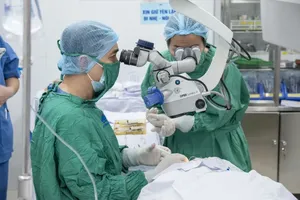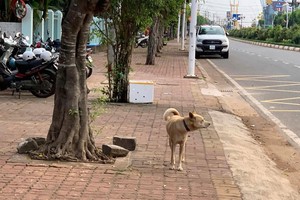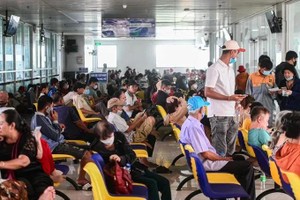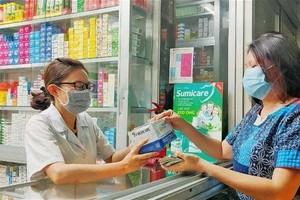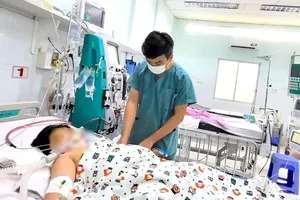 Victims of a poisoning case in hospitals
Victims of a poisoning case in hospitals
One student died, and hundreds of students and teachers fell ill at a primary school in the South-Central Province of Khanh Hoa after eating a midday meal contaminated with bacteria including Samonella spp, Bacillus cereus, Escherichia coli as confirmed by health officials. The incident made parents extremely confused.
This is the most serious incident because the number of teachers and students is high; worse, one first-grade student died. In fact, in some localities, cases of food poisoning at schools with dozens of hospitalization are still common.
Recently, many parents with children studying at Ngo Si Kien Primary School in Hanoi’s Thanh Tri District reported that their children had abdominal pain, nausea and symptoms suspected of food poisoning after eating lunch at school on September 19. However, the school ignored parents’ reports of contaminated food.
According to the Ministry of Health, by the end of October 2022, there were 43 cases of food poisoning in the country, causing 581 people to be poisoned, and 11 of them succumbed to the bacteria. In 2021, the country recorded 81 cases of food poisoning with 1,942 infected people and 18 deaths.
According to statistics in the period 2010-2020, there have been an average of 15 food poisoning cases in kitchens at companies and schools annually infecting over 1,130 people and about 1,000 of them were hospitalized.
Over the past two years, when the development of the Covid-19 epidemic was complicated, the number of collective food poisoning cases decreased; however, the number of cases of collective poisoning tends to increase from the beginning of 2022 until now.
Mr. Nguyen Hung Long, Deputy Director of the Vietnam Food Authority under the Ministry of Health, pointed out that the culprit of food poisoning cases in the collective kitchen is due to the use of ingredients and foods of unknown origin. Plus, people didn’t follow food safety and hygiene in transporting and preserving food. Through inspection, about 70 percent of food poisoning incidents take place because they have meals transported from other places.
According to the Ministry of Education and Training, about 5,000/15,000 primary schools provide lunch for students. More than 3,300 schools have kitchens while the remaining schools contract with other companies to provide meals for students. However, nearly 40 percent of schools have collective kitchens and canteens that do not meet food hygiene and safety requirements, and the management and supervision of school meals are still limited.
Dang Thanh Phong, Director of the Hanoi Food Authority, said that Hanoi currently has about 4,350 school canteens but just 3,911 schools have their own kitchens and canteens while 353 schools signed contracts with firms to cook meals for students.
From the beginning of 2022 up to now, the city has established more than 900 inspection teams to inspect and supervise food safety at 4,493 school cafeterias and industrial park collective kitchens. Inspectors have thrown the book at 10 establishments that breached the food safety regulation such as the use of raw materials and foods without a clear indication of origin.
According to Head of the HCMC Food Safety Management Board Pham Khanh Phong Lan, in the school year 2021-2022, the board paid visits to 1,708 educational establishments with collective kitchens and canteens. In the 2022-2023 school year, inspectors discovered two schools violating the law when visiting 2,231 education institutions.
Currently, the HCMC Food Safety Management Board is cooperating with schools to promote training for officials and employees about food safety encouraging schools and companies that provide school meals to use ingredients from manufacturers with quality certificates.




